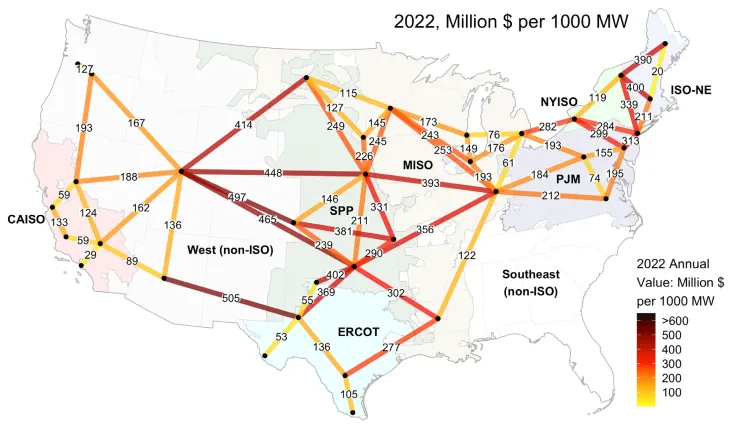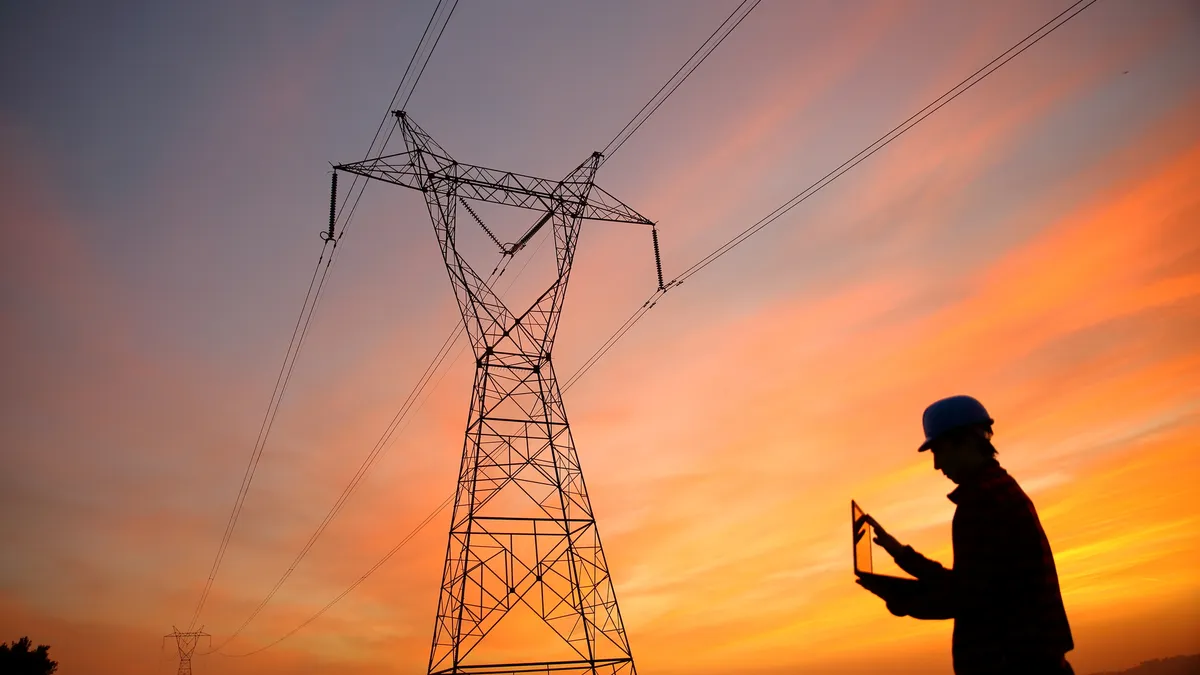Grid operators and transmission planning regions would be required to be able to transfer at least 30% of their peak load to neighboring regions under a bill Sen. John Hickenlooper, D-Colo., is preparing to introduce, according to an aide.
The pending legislation comes after winter storms Uri and Elliott led to rolling blackouts for millions of people and at least 250 deaths in Texas. Limits on the transmission system between regions prevented available power from going to areas where it was needed.
The Federal Energy Regulatory Commission has been considering requiring minimum amounts of transfer capability between regions, partly to bolster grid reliability. FERC Acting Chairman Willie Phillips supports the concept.
Hickenlooper’s Big Wires Act would require FERC to issue a rule establishing a minimum transfer capacity requirement, Daniel Palken, senior policy advisor to the senator, said Thursday during a meeting hosted by WIRES, a trade group for utilities, grid operators and companies in the transmission sector.
Under the draft bill, after FERC issues a final rule, grid operators would have two years to negotiate bilateral agreements laying out who would build interregional transmission lines, who would pay for them and the timeline for their construction, Palken said.
Those plans would be filed with FERC for approval. If they aren’t filed, FERC would have the authority to establish the interregional plans, according to Palken.
Options for meeting the requirement could include new transmission lines, upgrading existing ones and reducing energy use within a region, he said.
Besides improving grid reliability, more transfer capacity between regions would allow lower-priced electricity to flow across the grid, reducing costs, according to Palken.
He cited recent reports from the Lawrence Berkeley National Laboratory looking at potential savings from new power lines between regions. The value of a hypothetical 1,000-MW line ranged from $29 million to $505 million last year, depending on location, according to a report issued in February. The lines with the highest value linked the Western and Eastern interconnections.

Building those lines could produce a “stunning payoff,” Palken said. “The technical term for this would be ‘a gold mine.’ This is really an incredible opportunity and we're sitting on them in every part of the country.”
Under a 15% transfer requirement, the United States would need to add 114 GW of transfer capacity between regions, doubling the existing amount, Adria Brooks, a transmission planning engineer in the Department of Energy’s Grid Deployment Office, said at a FERC workshop in December.
WIRES panelists said it was unlikely interregional lines would be built without a requirement to do so.
“There does need to be a ‘forcing mechanism’ because fundamentally what we're up against here … is a lot of stickiness and a lot of inertia in the system,” Palken said.
David Kelley, vice president of engineering for the Southwest Power Pool and one of the WIRES panelists, agreed there likely needs to be a federal requirement that interregional lines are built.
However, after Winter Storm Uri, when SPP imported 6,000 MW from eastern neighbors, the grid operator already understands the value of additional interregional capacity, he said.
“If we don't get ahead of it, we're not going to get there together as a nation and accomplish what we want to do,” Kelley said. “So I think the forcing function at the federal level, and that's where I think it really needs to come from, and coordination with the states, is necessary to get us there in any reasonable amount of time.”
Through the Joint Targeted Interconnection Queue initiative, SPP and the Midcontinent Independent System Operator have identified five transmission projects along their border that could unlock about 30,000 MW of renewable generation, Kelley said. The projects would cost about $1.1 billion, but produce $188.6 million in 10-year adjusted production cost benefits, according to a late-March stakeholder presentation.
SPP and MISO are supporting an application for funding for half the projects’ costs under the Department of Energy’s $10.5 billion Grid Resilience and Innovation Partnerships Program.















